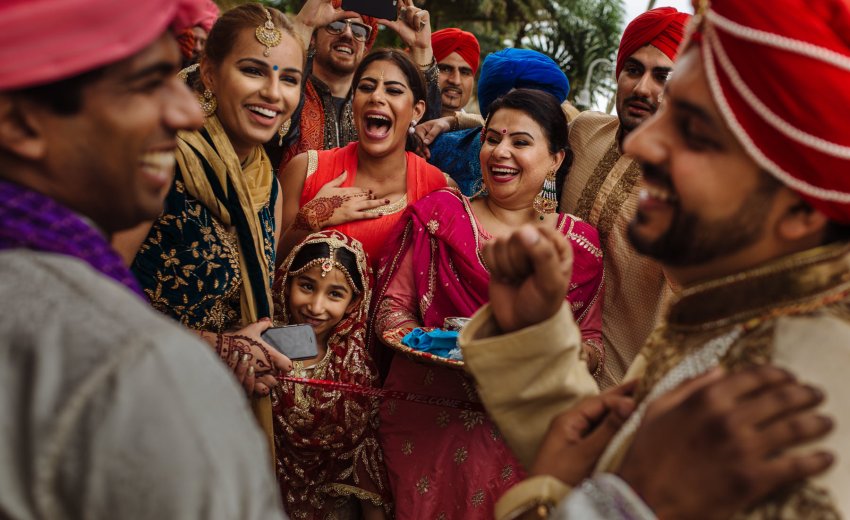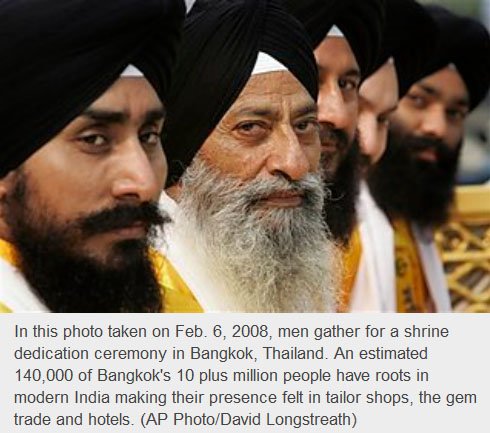 India pops up in unexpected places in the Thai capital with the country's ancient Hindu civilization infusing the Thai language, classical dance and religious architecture.
India pops up in unexpected places in the Thai capital with the country's ancient Hindu civilization infusing the Thai language, classical dance and religious architecture.
An estimated 140,000 of the city's 10-plus million residents have roots in modern India, making their presence amply felt in Bangkok's hotels, markets, tailor shops, the gem trade, cricket leagues and contemporary art galleries.
"It's a little-known Indian diaspora community compared to those in places like the United Kingdom or the United States - but perhaps equally influential," says Christopher Rego, a documentary filmmaker who selected Bangkok as the starting point for a multimedia project on the world's Indian communities. "It's like a microcosm of India's diversity."
Indian influences appear all across this sprawling city. Sukhumvit, an area popular with expats, has a plethora of Indian restaurants and major hotels operated by members of the Sikh community, many of whom have become extremely wealthy. In fact, large chunks of real estate in this area are owned by Thai-Indians.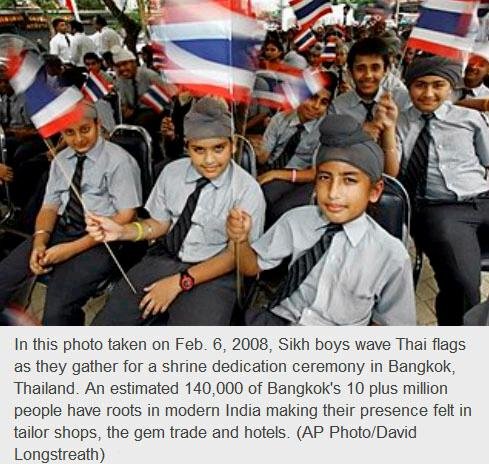 On the other side of town, far from Sukhumvit's modern buildings and Western chain restaurants, Bangkok's official "Little India" borders the vast markets of Chinatown. The golden domed Sri Guru Singh Sabha, believed to be the largest Sikh temple in Southeast Asia, towers over the area known as Phahurat, formerly an important center for the textile trade.
On the other side of town, far from Sukhumvit's modern buildings and Western chain restaurants, Bangkok's official "Little India" borders the vast markets of Chinatown. The golden domed Sri Guru Singh Sabha, believed to be the largest Sikh temple in Southeast Asia, towers over the area known as Phahurat, formerly an important center for the textile trade.
Rolls of cloth are still sold at Phahurat's Indian markets, along with Punjabi sweets, incense sticks, jewelry and the latest Bollywood hits on DVD. The setting is less intimidating than the larger labyrinths of Chinatown.
Royal India, said to be Thailand's first Indian restaurant, is tucked into a small alley in the heart of Phahurat, across the street from the four-story India Emporium. Bangkok's Indian community and foreign visitors alike occupy the restaurant's seven wooden tables where chicken masala and other traditional spice-laden dishes from northern India are served.
The Sikh temple in Phahurat remains very much a community place of worship, but the Hindu temple across town is a true religious melting pot. Thais and Chinese pay respect to the Hindu Goddess Uma Thewi at the Sri Mahamariamman Temple off Silom Road. Next door, Chennai Kitchen prepares fresh vegetarian food characteristic of southern India.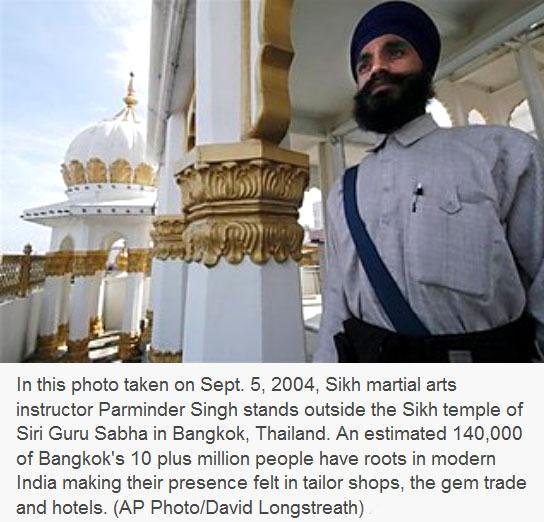 Tamil priests built the temple near what is now Bangkok's financial district. The current priest is a fourth generation Tamil immigrant, but many devotees are Thai Buddhists who worship Hindu gods.
Tamil priests built the temple near what is now Bangkok's financial district. The current priest is a fourth generation Tamil immigrant, but many devotees are Thai Buddhists who worship Hindu gods.
One of Bangkok's top tourist draws is the Erawan Shrine, built in 1956 to ward off problems plaguing the construction of an adjoining hotel. Daily, crowds flock to a golden image piled high with flowers and incense as dancers pay homage to the four-faced Hindu god Brahma.
Although some 95 percent of Thais are Buddhists, many include elements of Hinduism in worship stemming from cultural and religious influences which flowed across the Indian Ocean to reach Southeast Asia centuries ago.
The khon - a popular, dramatic form of Thai classical dance- tells the stories of the Ramayana, an ancient Hindu epic. Thai royal ceremonies are infused with Hindu-Brahmin rituals, and many words in the Thai language originated from Sanskrit.
In more recent times, Tamils and Gujaratis migrated to Thailand in the late 1800s, trading in gems and textiles. Large-scale modern migration from northwest India began in the 1890s, followed by a wave of Sikhs and Hindus from the Punjab.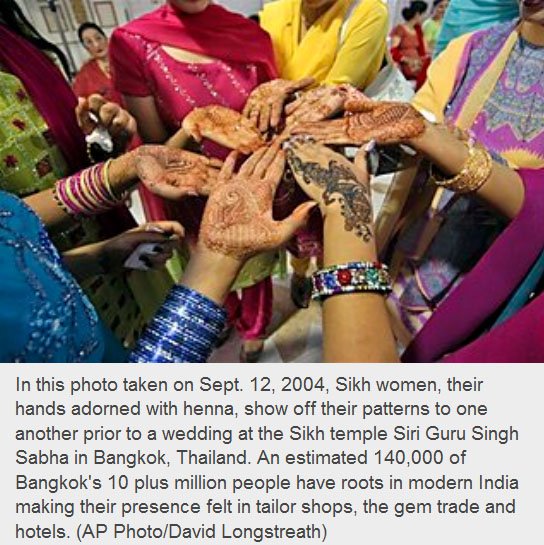 "We ourselves are Thais, but we have an Indian look," said Jesse Gulati, 59, owner of Rajawongse tailor shop, echoing many among the community. Gulati and son Victor fill orders for international businessmen, visiting heads of state and diplomats.
"We ourselves are Thais, but we have an Indian look," said Jesse Gulati, 59, owner of Rajawongse tailor shop, echoing many among the community. Gulati and son Victor fill orders for international businessmen, visiting heads of state and diplomats.
Gulati's father migrated to Thailand in the 1930s, a move that actually strengthened the family's cultural and religious ties to India. "We were more Sikh, more religious in Bangkok than the Sikhs in India were," Gulati said.
Many of Bangkok's individual Indian communities, including the Sikhs, have now seen their third or fourth generations grow up in Thailand. Assimilation adds another chapter to the cultural narrative of Bangkok's India.
"Some youth are becoming westernized, living in Bangkok," Gulati said, without a trace of irony. And Thai-Indian marriages, once a rarity, are now more common as Thais shed some once strongly held prejudices against the immigrants who were referred to as "khaek," or guests, as in "unwelcome guests."
"The third generation is more accepted by Thai people," said Asha Sehgal, a second generation Thai-Indian.

